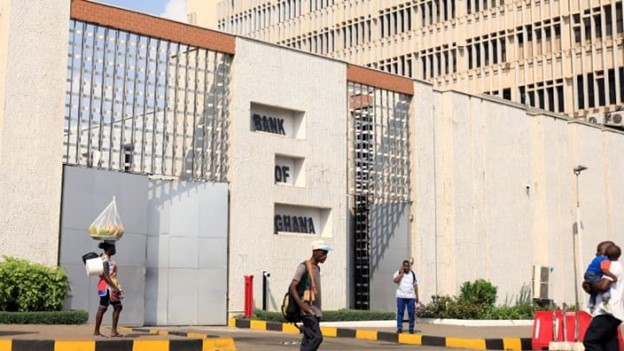Debt restructuring is a process by which an institution reorganizes its outstanding debts in order to improve or restore its solvency. This can involve reducing the total amount of debt, extending the maturity of the debt, or renegotiating the terms of the debt.
The goal of debt restructuring is to make the debt more manageable and sustainable, while also preserving the value of the underlying assets. It’s a process that can be used by companies, individuals or sovereign nations to manage their debt.
Individual bondholders
When a government embarks on a debt restructuring, it is important to consider all the potential consequences, especially when it comes to individual bondholders.
In many cases, it is advisable to avoid including individual bondholders in a debt restructuring. In this post, I will provide an analysis of why this should be avoided, using historical examples and facts to illustrate my points.
In June 2022, there were reports that fund managers were having difficulty fulfilling requests for withdrawals as investors pulled out their money and stopped making new deposits.
This was primarily due to a shift in investment strategy as investors sought higher returns in light of rising treasury bill interest rates, which had increased from 12.5% in January to 25% by June.
The situation worsened when news of a potential local debt restructuring was reported on Bloomberg and investors rapidly withdrew their funds.
In light of these events, the Securities and Exchange Commission (SEC) directed fund managers to apply the “mark-to-market valuation method” when determining the value of investment assets, securities, and portfolios in the securities sector.
Domestic exchange program
Subsequently, the government officially launched the Ghana Domestic Exchange Program as a means of restructuring the country’s debt to achieve sustainable levels.
The program is expected to run from 2023 to 2037. It involves the government exchanging current domestic bonds for a set of new ones with maturity dates in 2027, 2029, 2032, and 2037.
The announcement was met with fierce opposition. The government has since been compelled to revise its deadline for the proposed DDE.
As of October 2022, Ghana’s total public debt was $48.87 billion, an increase from $32.3 billion in 2017. This represented 84% of the country’s GDP. External debt accounted for $28.1 billion, or 40.5% of GDP, while domestic debt was $26.3 billion, or 37.8% of GDP.
The country’s debt-to-GDP ratio was projected to reach 107% by the end of 2022 according to the World Bank. Ghana’s total public debt stood at GHC467.4 billion at the end of September 2022, with domestic debt at GHC195.7 billion and external debt at GHC271.7 billion.
The increase in domestic debt is attributed to rising interest costs, while the sharp increase in external debt is attributed to the depreciation of the cedi against major trading currencies. The Minister of Finance stated that the depreciation of the local currency added GHC93.9 billion to the external debt since the beginning of 2022.
The persistent high fiscal deficit in the country can be partly attributed to the excessive government spending that is not productive and fails to effectively promote equitable development.
Also, huge sums of funds get lost through corruption, particularly within state agencies.
IMF bailout
The continued economic challenges compelled the Ghanaian government to again turn to the International Monetary Fund (IMF) for assistance, this being the 17th time. This bailout has become necessary after a new electronic transaction tax (e-levy) of 1.5% on all electronic transfers over GHS100 did not generate the expected revenue.
Previous IMF programs have helped to stabilize the country’s macro-economy. Adhering to fiscal discipline by governments in Ghana have often relied on these programs, as self-regulation is uncommon.
The Fund has stated that it will not provide loans to nations with unsustainable debt levels unless measures are taken to ensure debt sustainability, hence the debt restructuring.
First and foremost, it is important to understand that debt restructuring is a sensitive process that can have a significant impact on the economy of a country.
When a government restructures its debt, it is essentially renegotiating the terms of its loans with its creditors. This can include extending the maturity of the debt, reducing the total amount of debt, or changing the interest rate.
In some cases, the government may also ask for a “haircut” or reduction in the value of the bond, which is seen as a default. When individual bondholders are included in a debt restructuring, it can lead to a loss of confidence among investors.
This is because bondholders may see the restructuring as a sign of financial distress and may question the government’s ability to repay its debts. This can lead to a decrease in the value of the bond and a loss of income for the bondholders.
Domestic debt
The largest holders of domestic debt in the country include domestic banks, the Bank of Ghana, non-bank financial institutions, private individuals, pension funds, insurance companies, and foreign investors.
The restructuring of the country’s domestic debt could have negative impacts on individual households, whether through direct ownership of debt or through investments in mutual and pension funds.
It may affect the access to bank credit and the cost of borrowing for Ghanaian businesses and households, which could have further distributional consequences. It could also affect the ability of domestic banks and businesses to grow, resulting in a decrease in overall economic output.
Additionally, restructuring including a “haircut”, can lead to a further loss of confidence in the government’s ability to repay its debts and in the country’s economy as a whole.
Historically, there have been several examples of debt restructuring that have included individual bondholders and have had negative consequences. One of the most notable examples is the Argentine debt restructuring in 2001. In this case, the Argentine government renegotiated its debt with its creditors, including individual bondholders.
However, the restructuring resulted in a significant “haircut” for the bondholders, with many of them receiving only 25 cents on the dollar for their bonds.
This caused a great deal of anger and frustration among the bondholders, and it also led to a loss of confidence in the Argentine economy. This ultimately led to a severe economic downturn and the country’s economy took a long time to recover.
Another example is the Greek debt restructuring in 2012. The Greek government renegotiated its debt with its creditors, including individual bondholders. The restructuring resulted in a “haircut” of around 50% for the bondholders. This led to a loss of confidence among investors and a decrease in the value of the bond.
It also caused a great deal of anger and frustration among the bondholders, which ultimately led to a long-term negative impact on the Greek economy.
In conclusion, it is important to avoid including individual bondholders in a debt restructuring whenever possible. This is because it can lead to a loss of confidence among investors, a decrease in the value of the bond, and a loss of income for the bondholders.
Additionally, if the restructuring includes a “haircut”, it can lead to a further loss of confidence in the government’s ability to repay its debts and in the country’s economy as a whole. Legal and administrative complications can also arise, which can slow down the overall debt restructuring process.
It is important for the government to be transparent in its negotiations, and communicate clearly with the bondholders to ensure they understand the situation, the reasons behind the restructuring, and how it will impact them. This can help to mitigate the negative effects on confidence in the investment sector.
Cover Photo: Iwaria/iwaria.com



